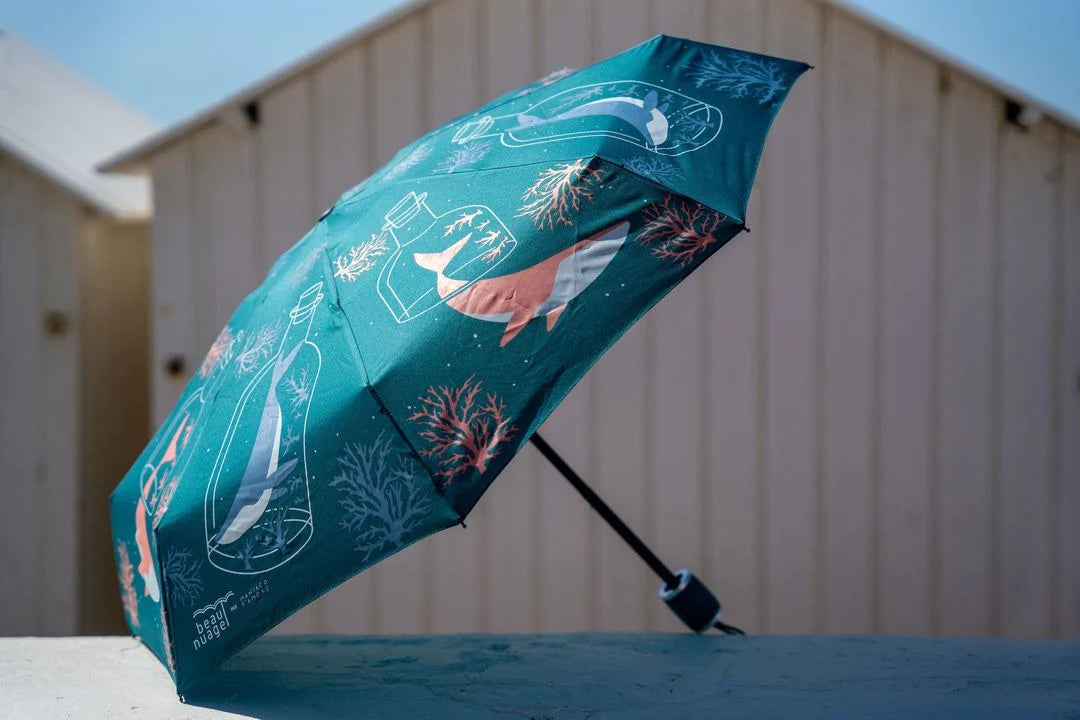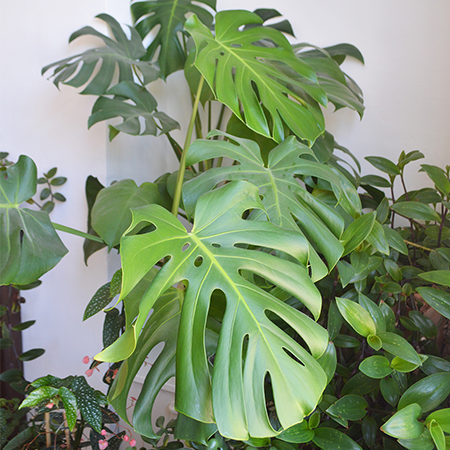HOW OFTEN SHOULD I WATER INDOOR PLANTS?
SPRING PLANT CARE TIPS!
Spring is finally here and our indoor plants have started to wake up from the long winter months and are jumping straight into the growing season!

BURRO'S TAIL
SUCCULENT

MONSTERA DELICIOSA
TROPICAL PLANT
Now, there are questions that might be raise such as, ‘How often should I water my plants?’ or ‘How often should I fertilise my plants?’ Fear not! We are here to answer any plant care questions that you might have, whether you are a plant parent to a Devil’s Ivy, a Calathea or a Prayer Plant! Let’s dive into it!
LET'S START WITH THE PLANT CARE BASICS
For a houseplant to thrive at home, we need to recreate their original habitat as much as possible. For instance, most houseplants prefer a warm place at home in a bright filtered light location far away from high heat, direct sunlight and drafts. This is because many houseplants come from tropical areas where the tree canopy constantly filters sunlight. As a rule of thumb, we suggest to always place your tropical houseplants in indirect sunlight. An example of plants that do well in these conditions are; Calathea, Maranta, Alocasia, Palms like Yucca, Kentia and Parlour, Monsteras, Ficus, Fiddle Leaf Fig, String of Hearts, Peperomia and Philodendron.
Other plants like succulents and cacti require a larger amount of sunlight to grow, and so, they do well closer to the windows or on window seals.
Examples of these plants include; Aloe Vera, Jade Plant, Snake Plant, Papyrus, Ponytail Palm, Moon cactus, Burro´s Tail. Coral Cactus, Echeveria and Cycad.
But what if you do not have much light at home? What are the best houseplants for low light? Plants like the Snake plant, Fern, ZZ plant and Pothos will do well in these circumstances.
SO HOW DO YOU DETERMINE SUNLIGHT LEVELS FOR PLANTS?
Sunlight has a massive impact in our houseplants. The wrong light level can stress our plants which can make them more susceptible to pests and disease. Our team has created an illustration to help you understand what the three main types of interior plant lighting mean.

FULL EXPOSURE OR DIRECT SUNLIGHT
Direct sunlight, as the name suggests, is/occurs when a plant receives direct, unobstructed sunlight.
Sunny South or West-facing windows qualify as direct sunlight environments.
BRIGHT INDIRECT - MEDIUM LIGHT OR FILTERED LIGHT
Indirect sunlight is/occurs when a plant is in a light filled room but something such as window shades, curtains or other plants obstruct the sun’s path. It also happens when the plant is places in an area that is not directly facing a sunny window.
LOW / SHADED OR LOW LIGHT
North facing rooms, flats located on lower floors, a room where the sunlight is blocked by a nearby building or placing the plant in a corner of a room where the sun rays cannot reach it, qualify as low light environments.

CANE BEGONIA
TROPICAL PLANT

CALATHEA TRIOSTAR
TROPICAL PLANT
WATERING
March to September is considered the houseplants growing season, an amazing time of the year where we see our green beauties grow faster, flower or shoot loads of new leaves. It is such an exciting time for any plant parent! However, we need to remember that our plants will require more watering to grow stronger and healthier than during the winter months when they don’t require so many nutrients to live as they tend to go dormant.
Most indoor plants, especially tropical plants, prefer a moist soil during the growing season. However, waterlogged compost can be fatal for them as it can easily cause root rot. To prevent this from happening, a good drainage is essential.
Our team always uses terracotta pots that already have a drainage hole, but if we want to put our plants in a fancier decorative pot, we then keep the plant in its original nursery pot and place it directly into the decorative pot of our choice. This way, every time we water our plants, we can easily remove them from the decorative pot, water them thoroughly and place them back into it once the water has stop dripping from the drainage holes.
Remember to never leave your plants sitting in water as this can stress the roots.
Generally, our indoor plants will need to be watered at least once a week and our succulents and cacti once every other week.
FEEDING
Houseplants need a little extra help when they are growing. An organic liquid fertiliser fed every 7 to 10 days will promote a healthy growth.
We use our own Organic Plant Food blend which is packed with magnesium, potassium and minerals which will improve the plants resistance to pests and disease. Not all houseplants will require fertilising. Some, like the String of Hearts, have very think roots that will burn if we fertilise them. We recommend you to check if your plants will benefit from a fertiliser before using it.
PROTECTING
The best way of protecting your plants from pests and disease is trying to prevent it from happening on the first place.
A great way of doing so is by inspecting your plants whenever you water them. Take a soft cloth and dust your leaves and remember to check the back of the leaves for any sneaky bugs and remove any dried leaves.
We also use a preventative blend of Organic Neem Oil that we spray to the plant leaves every 14 days.
If you identify any bugs, use the Organic Neem Oil formula every 7-10 days. You can also apply the mixture directly to the soil to stop larvae from hatching.
REPOTTING
Early spring is the best time of the year to repot your plants. A dense saturated soil and root congestion can affect your plants’ growth drastically. Repotting your plants in a good quality compost every 12-18 months (depending how fast growing your plants are) will help them keep growing healthily.
If you are unsure if your plants need repotting, check if the roots are coming out of the drainage holes. You can also remove each plant carefully from their planter. If you find a group of long roots in the shape of the pot, it is time for your plant to be repotted!
A high quality potting mix is extremely important. We find that commercial potting soil tends to dry out very quickly and doesn’t have the nutrients that plants require.
There are many formulas for making your own potting soil, however, we find the below simple mix to work perfectly fine with our plants.
For tropical indoor plants you will need 60% of peat moss or coco coir + 40% perlite or pumice. Cacti and succulents, on the other hand, will need a mixture of 1 part of peat moss + 1 part of perlite or pumice.





